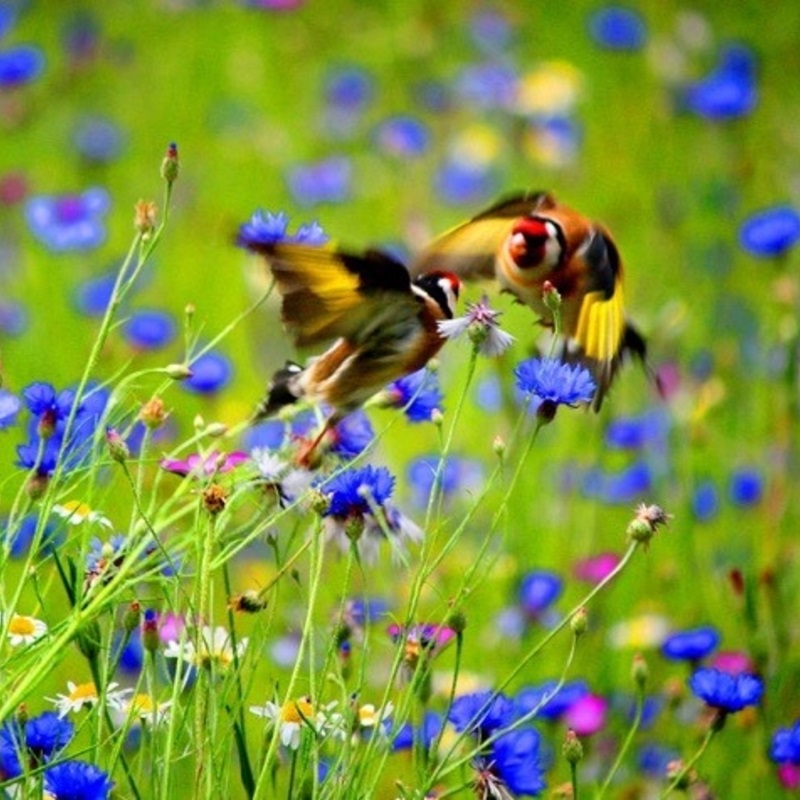Waypoint 6 Wild bird habitat | Ranger Cadets guided walking trail
 Andy's farm is as environmentally friendly as he can make it.
Andy's farm is as environmentally friendly as he can make it.
He doesn’t plough his soil, since that would release greenhouse gases. He’s installed solar cells behind his farm, facing south, and uses them to power an electric car he’s driven for years.
He sets aside strips of land in every field and creates hedgerows for birds and animals to live and thrive.
Sometimes Andy sets aside a whole field for birds or insects. You can see one at Waypoint 6, if you look over the gate and up to the left.
In fact you can walk through the gate and have a look around, if you want to.
Something else you can see in this field is how farming is often at the mercy of the weather. The hot, dry summer of 2025 means that the wild bird mix field is not doing too well this year.
Many of the plants that should have produced flowers and then seeds for birds to eat have unfortunately died in the drought and heat.
So what is wild bird mix? It's bags full of seed for plants such as millet, rye, spring barley, quinoa, phacelia, triticale, fodder radish, etc. When Andy sows these seeds, they germinate and then flower in spring and summer, providing food for pollinators and other insects.
Once pollinated, each plant then produces many more seeds, which can feed the birds in autumn and into winter.
Farming at its best is not just about producing food for people. Good farmers think of themselves as stewards of the countryside.
They see it as their job to take care of the land, to make sure it works for every living thing and to pass it on, healthy and thriving, to the next generation.
Come back out of the field and walk back along the trail, passing the track you came down on your right. Up ahead you will soon glimpse - slightly to your right in the field - a line of tall poplar trees. Stay on the track, heading up towards the trees and when you reach them go into the field. You should find the QR code for Waypoint 7 there.
Back to Waypoint 5







